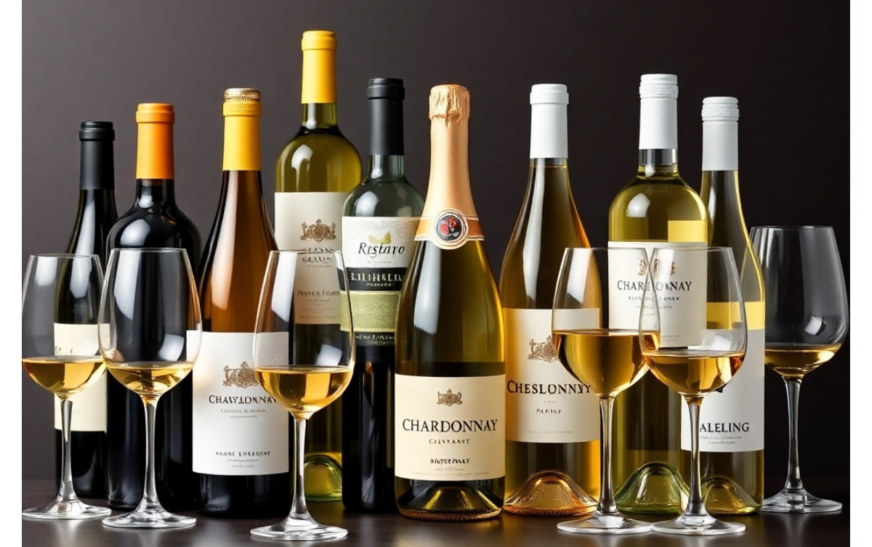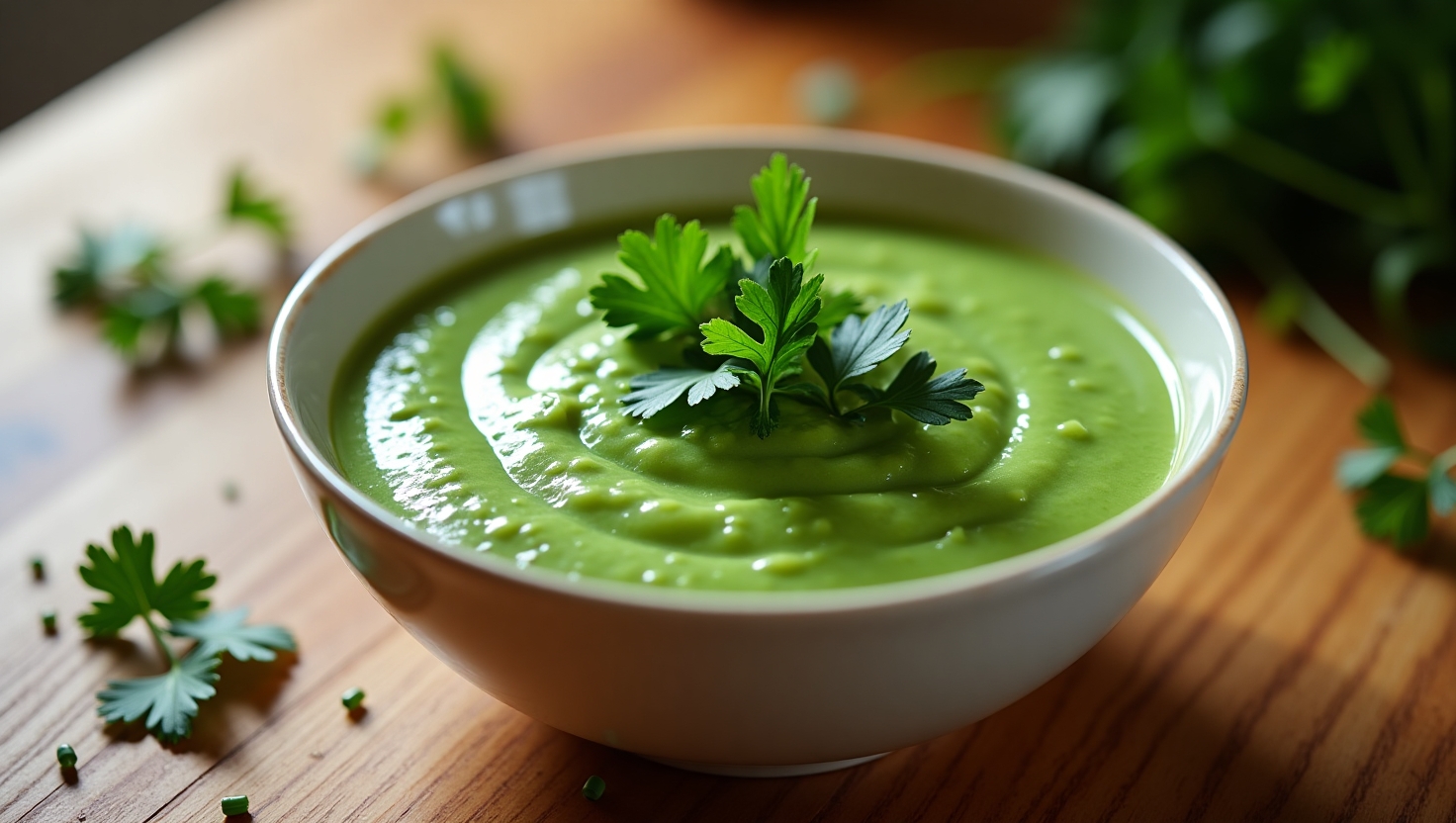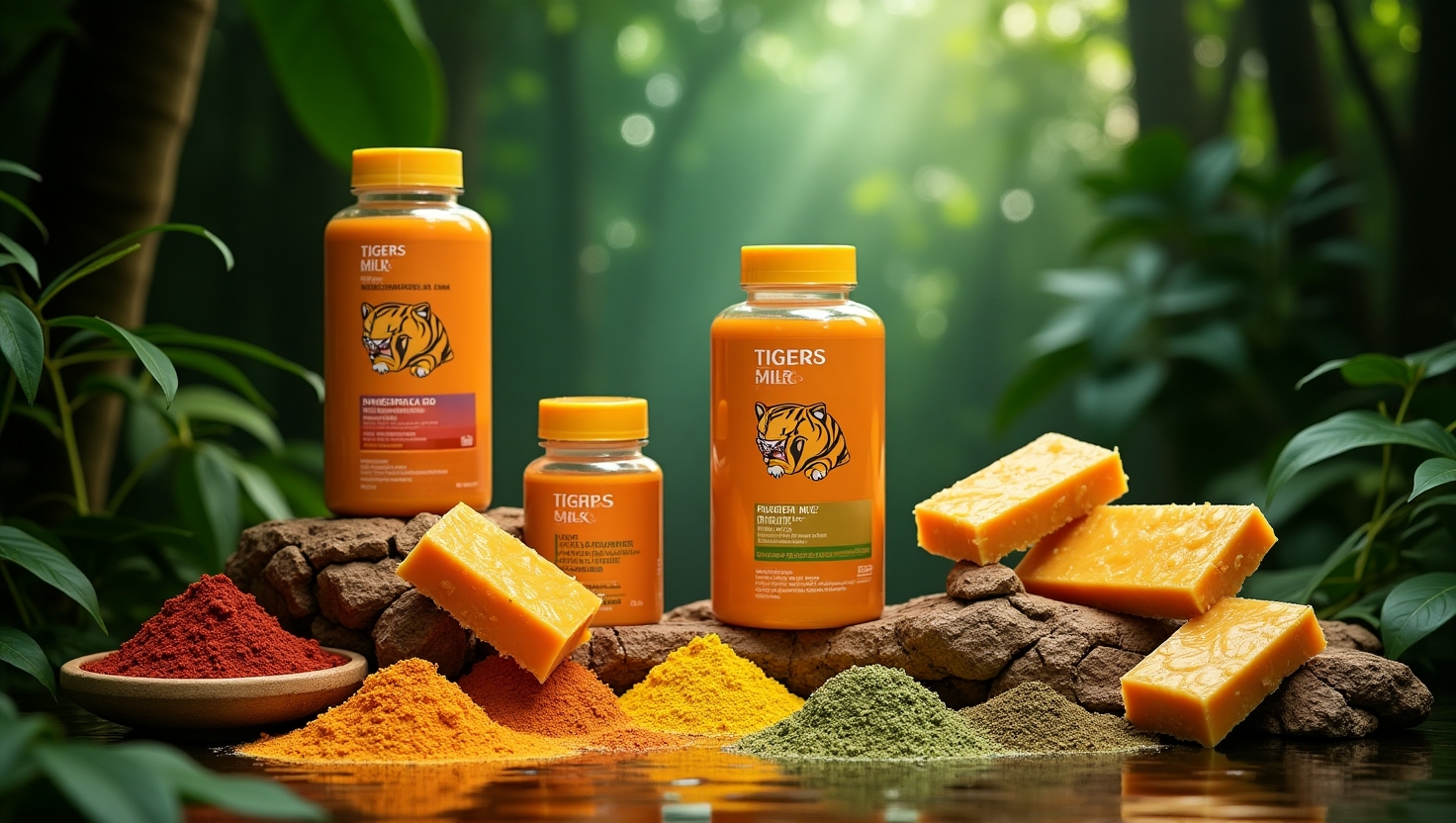White wine is a timeless favorite, known for its light, refreshing flavors and versatility. From crisp and zesty Sauvignon Blanc to rich and creamy Chardonnay, its diverse types cater to every palate. Loved around the world, white wine is perfect for pairing with meals or enjoying on its own.
This article explores everything you need to know about white wine, including its popular varieties, health benefits, and tips for choosing the right bottle.
What is White Wine?
White wine is a type of alcoholic beverage made by fermenting the juice of white or green grapes, without the grape skins. Its light, refreshing taste comes from a careful process that preserves its delicate flavors and aromas.
Unlike red wine, white wine is typically pale in color, ranging from straw yellow to golden hues. It’s enjoyed worldwide for its versatility and ability to pair beautifully with a variety of foods.
Which White Wine Types Are Best?
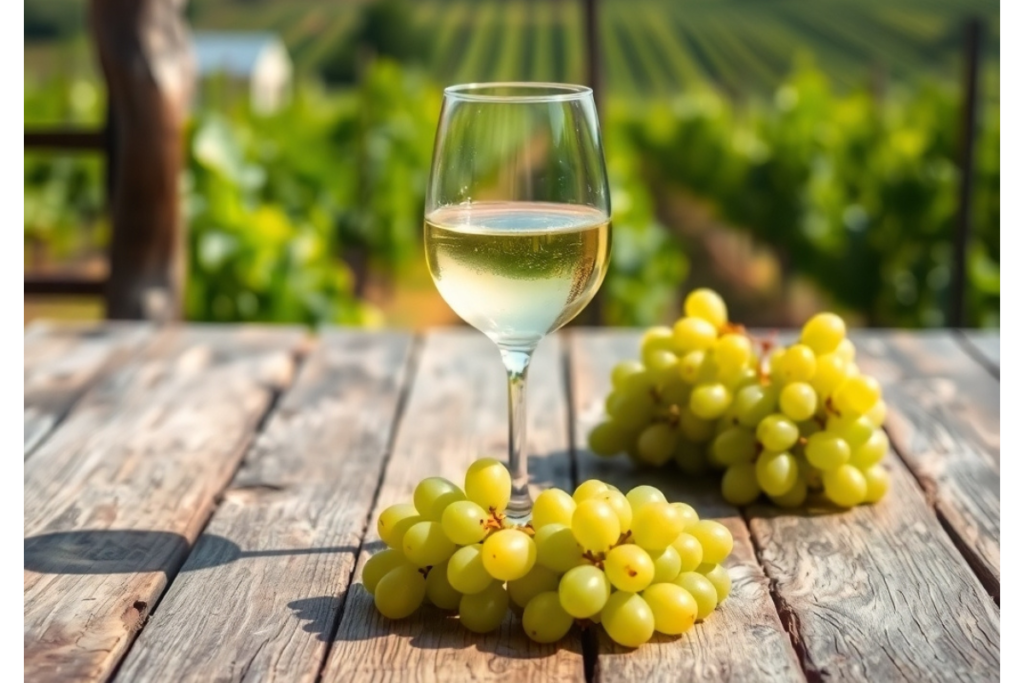
Choosing the best white wine depends on personal taste and the occasion. Each variety offers unique flavors, aromas, and characteristics. Here are some popular white wine types and what makes them stand out:
Chardonnay
Chardonnay is one of the most popular white wines, known for its rich and creamy texture. Its flavors can range from buttery and oaky to crisp and fruity, depending on how it’s made. Chardonnay is produced in many regions, including France’s Burgundy and California’s Napa Valley, making it a versatile choice for wine lovers.
Sauvignon Blanc
This crisp and zesty wine is loved for its herbal and citrusy notes. Sauvignon Blanc often carries flavors of lime, green apple, or even freshly cut grass. It thrives in regions like New Zealand and France’s Loire Valley, where the climate gives it a unique, vibrant character.
Riesling
Riesling is a highly aromatic wine with a flavor profile that can range from sweet to bone-dry. Often featuring notes of honey, apricot, or floral blossoms, it’s particularly popular in Germany and Alsace. Riesling pairs wonderfully with spicy dishes, making it a go-to choice for adventurous foodies.
Pinot Grigio
Light and refreshing, Pinot Grigio is known for its crisp acidity and subtle flavors of pear, green apple, and lemon. It’s a favorite in Italy, where it’s often enjoyed as a casual, everyday wine. Perfect for a warm summer evening, Pinot Grigio is a crowd-pleaser.
Viognier
Viognier is a rich, aromatic white wine with notes of apricot, peach, and honeysuckle. Originating in France’s Rhône Valley, it is now widely produced in California and Australia. Its full-bodied texture makes it an excellent pairing for creamy pasta, roasted chicken, and mildly spiced dishes.
Albariño
A zesty and citrusy wine from Spain’s Rías Baixas region, Albariño is a seafood lover’s dream. It features refreshing flavors of lime, lemon, and peach with crisp acidity. Perfect for summer sipping, it pairs exceptionally well with shellfish, sushi, and light salads.
Grüner Veltliner
Austria’s flagship white wine, Grüner Veltliner, offers a unique peppery note alongside green apple, lime, and herbal undertones. Known for its vibrant acidity, it complements salads, grilled fish, and even fried dishes. Its versatility makes it a favorite for wine-and-food pairing.
Chenin Blanc
Chenin Blanc is a versatile grape that produces dry, sweet, and sparkling wines. With flavors of pear, quince, and honey, it thrives in France’s Loire Valley and South Africa. It’s a great choice for pairing with everything from fresh seafood to creamy desserts.
Gewürztraminer
Known for its bold floral and fruity aroma, Gewürztraminer features lychee, rose, and spice notes. This off-dry wine, hailing from Alsace, France, is an ideal companion for spicy Asian cuisine, including Thai and Indian dishes.
Sémillon
Sémillon is celebrated for its smooth texture and flavors of lemon, fig, and honey. A key component in Bordeaux blends and dessert wines, it pairs beautifully with seafood, roasted chicken, or creamy cheese. Its ability to age gracefully adds to its appeal.
Marsanne
Marsanne is a Rhône Valley white wine known for its nutty, melon, and pear flavors. It develops complexity with age, making it a favorite for wine collectors. Best paired with roasted poultry, creamy pasta, or grilled fish.
Muscat Blanc (Moscato)
Muscat Blanc is a sweet and aromatic wine with flavors of orange blossom, peach, and honey. A favorite for beginners, it is produced globally, especially in Italy. It pairs well with desserts, fruit-based dishes, or as a standalone treat.
How to Taste White Wine Like an Expert?
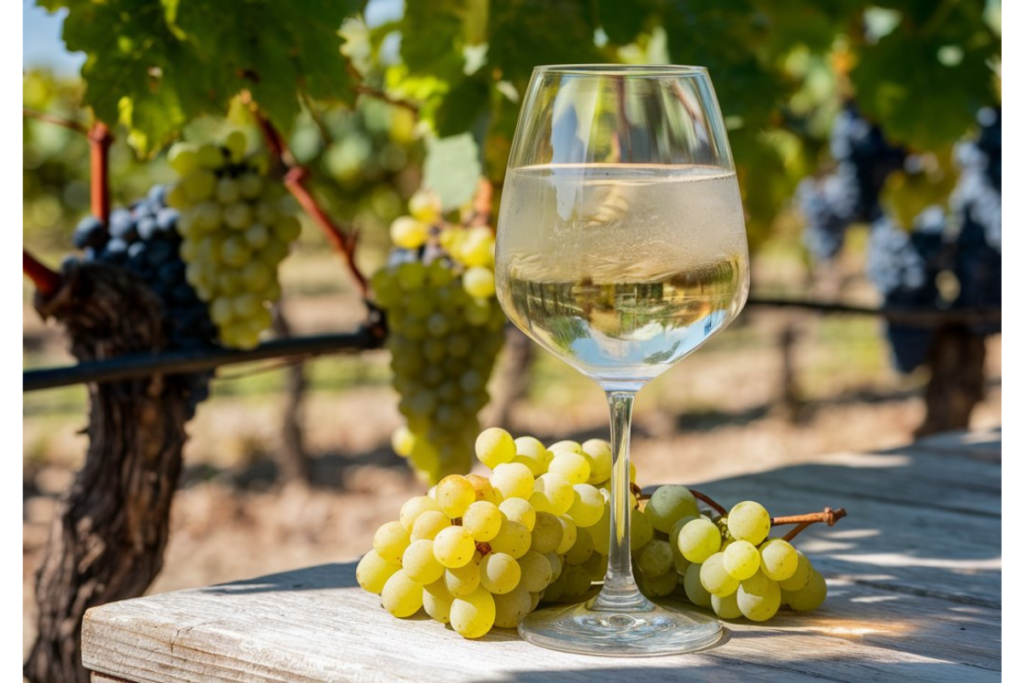
Tasting white wine is an art. Start by swirling the wine gently in your glass to release its aromas. Take a moment to smell and identify the scents—perhaps citrus, floral, or honey. Finally, sip slowly, letting the flavors coat your tongue as you savor the experience.
Health Benefits of White Wine
White wine, when consumed in moderation, offers several health benefits backed by research. Here’s a deeper dive into its potential advantages:
Stress Reduction: Like other alcoholic beverages, a small glass of white wine can help unwind and reduce stress levels when consumed responsibly.
Note: Overconsumption can negate these benefits, so moderation is key. Stick to one glass per day for women and up to two for men.
Rich in Antioxidants: White wine contains antioxidants like flavonoids and phenols, which help protect cells from damage caused by free radicals. This can reduce the risk of chronic diseases.
Heart Health: Studies suggest that moderate white wine consumption can improve heart health by increasing good cholesterol (HDL) levels and reducing inflammation in blood vessels.
Improved Lung Function: Certain studies have found that white wine might support better lung health due to its antioxidants. This makes it a lighter yet beneficial alternative to red wine.
Skin Benefits: White wine has mild anti-aging properties. The antioxidants can help promote healthy skin by combating oxidative stress.
White Wine Storage and Serving Tips
Proper storage is essential for maintaining the quality of white wine. Store bottles in a cool, dark place, ideally at 45–55°F (7–13°C), and keep them lying flat to prevent the cork from drying out. Serve white wine chilled, usually between 45–50°F (7–10°C), and use a tulip-shaped glass to concentrate the aromas.
White Wine Buying Guide
Selecting the perfect white wine can be an enjoyable experience when you know what to consider:
- Flavor Profile: Identify your preferred taste—crisp and dry (like Sauvignon Blanc), rich and buttery (like Chardonnay), or sweet and aromatic (like Riesling).
- Occasion: Match your wine to the event. A light Pinot Grigio is great for casual gatherings, while an oaked Chardonnay suits formal dinners.
- Region: Wines from different regions have distinct characteristics. For instance, French Chardonnays are elegant and mineral-driven, while Californian ones are full-bodied and creamy.
- Food Pairing: Consider the meal you’ll serve with the wine. Pair dry whites with seafood, sweet wines with desserts, and medium-bodied ones with poultry or vegetarian dishes.
- Sustainability and Organic Options: Many producers now focus on sustainable or organic winemaking practices. These wines not only taste great but are also better for the environment.
- Budget: You don’t need to splurge for quality. Many excellent white wines are available at affordable prices. Look for recommendations or try smaller brands for hidden gems.
- Label Reading: Learn to decode wine labels. Terms like “dry,” “late harvest,” or “reserve” provide insights into the wine’s flavor and quality.
White Wine Myths vs. Facts

Myth: White wine is only for beginners.
Fact: While white wine is approachable, it can also be incredibly complex, with layers of flavors and aromas that appeal to seasoned wine enthusiasts.
Myth: White wine has fewer health benefits than red wine.
Fact: While red wine is often touted for its heart-healthy properties, white wine also contains antioxidants and other beneficial compounds that contribute to overall wellness.
Myth: You can’t age white wine.
Fact: While most white wines are best enjoyed young, certain varieties, like high-quality Chardonnays or Rieslings, can age beautifully and develop richer flavors over time.
Myth: White wine is best served ice-cold.
Fact: Over-chilling can mask the flavors of white wine. Serving it slightly chilled (45–50°F) enhances its aroma and taste.
Myth: White wine is only suitable for summer.
Fact: White wine is versatile and pairs well with dishes year-round, from light summer salads to hearty winter soups.
Myth: All white wine tastes the same.
Fact: The flavor profiles of white wines vary widely, from the citrusy brightness of Sauvignon Blanc to the floral sweetness of Moscato or the creamy richness of oaked Chardonnay.
Final Thoughts
White wine is a versatile and delightful drink that has earned its place at tables worldwide. Whether you prefer a crisp Sauvignon Blanc or a creamy Chardonnay, there’s a white wine for every palate and occasion. So, explore the varieties, savor the experience, and always enjoy responsibly.
Frequently Asked Questions
What are the types of white wine?
Popular types include Chardonnay, Sauvignon Blanc, Riesling, and Pinot Grigio.
How is white wine made?
White wine is made by fermenting the juice of white or green grapes without grape skins.
What food pairs well with white wine?
White wine pairs well with fish, chicken, pasta with cream sauce, and light salads.
Can white wine go bad?
Yes, white wine can spoil if not stored properly or after being opened for too long.
Is white wine healthy?
In moderation, white wine may offer health benefits like antioxidants and heart health support.

